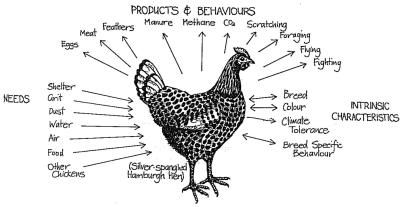When you look at natural systems you can see an abundance of life. Life is packed into every nook and cranny of the globe. It thrives and regulates itself with ease. Each element in the web of life fills a niche, and provides a service for the system as a whole by filling it’s needs. We all understand this. Plants provide nutrients for trees, the food chain, predators must eat prey to prevent over population, even parasites and diseases pick off the unhealthy elements of an ecosystem and serve a function, but we need to apply this knowledge to our own lives if we want to operate in that circle. Right now, the way we feed ourselves pretends that we don’t participate in such primitive thing.
Permaculture began as a thought in Bill Mollison’s head when he saw that ecologists were feeding themselves from a system that went against ecology. The resulting years brought about an experimental science in using natural principals to grow and produce food and energy for people.
The first principle of permaculture is to work with nature and not against it. Nature produces surplus on it’s own. If you can study and use the methods that nature uses to prepare soils and provide for successful productive systems, then nature will do the work for you.
Another way to think of it is to make the problem, the solution. “If you hate something, it will haunt you as long as you hate it.” Use the function of whatever is bothering you. If a weed comes up in your garden, there is a reason, discover the reason and fill that plants niche with something productive and the weed will go away while you benefit from the producer. If you have a snail problem, let your chickens or ducks in, they get fed, and keep your garden clean.
Another principle is to make the least change for the greatest effect. Permaculturists try and do energy accounting, so when they do anything, they look closely at what the results of the work will be to make sure it’s worth doing a head of time. This accounting includes, time, effort, money and energy compared to yield, pest control, wind control, water needs, and long term results. Permaculturists have had a hard time showing the effectivity of their design because it takes years for a forest to grow, and years to get the staggering results the end up getting. They say that the results, or yield of a farm is only limited by information, and imagination.
So we stack our farms. We make the areas dense with life so they can support each other. Each element serves the system and the people in many wells. It takes years of study and research but there are institutes all over the planet now doing that research. Everything gardens, so include as many elements as you can in your system, and you’ll be laughing.


